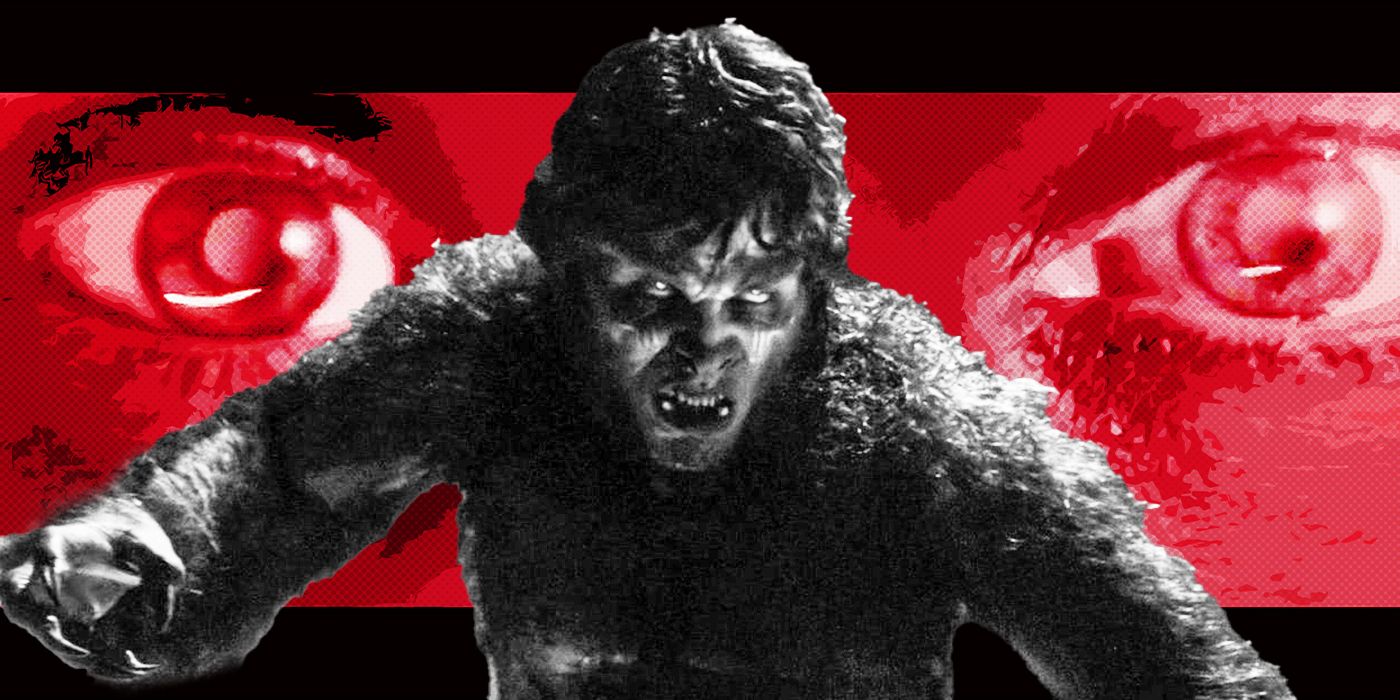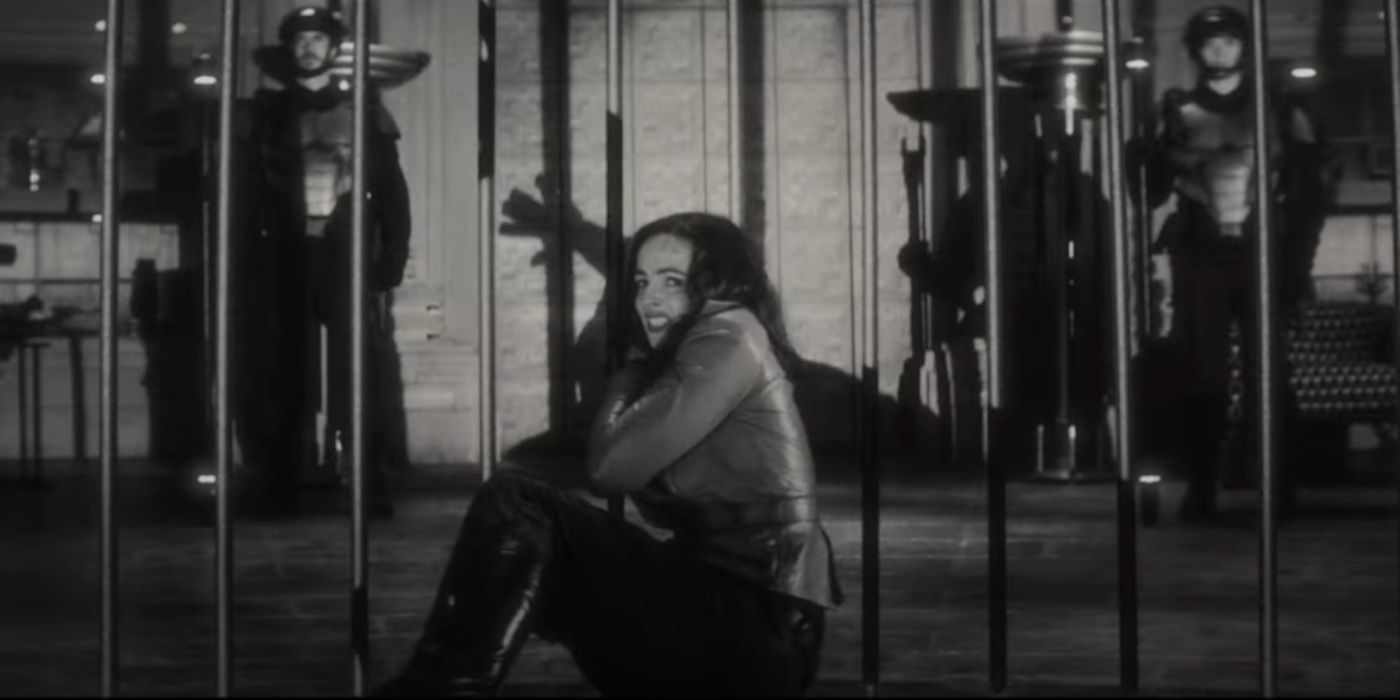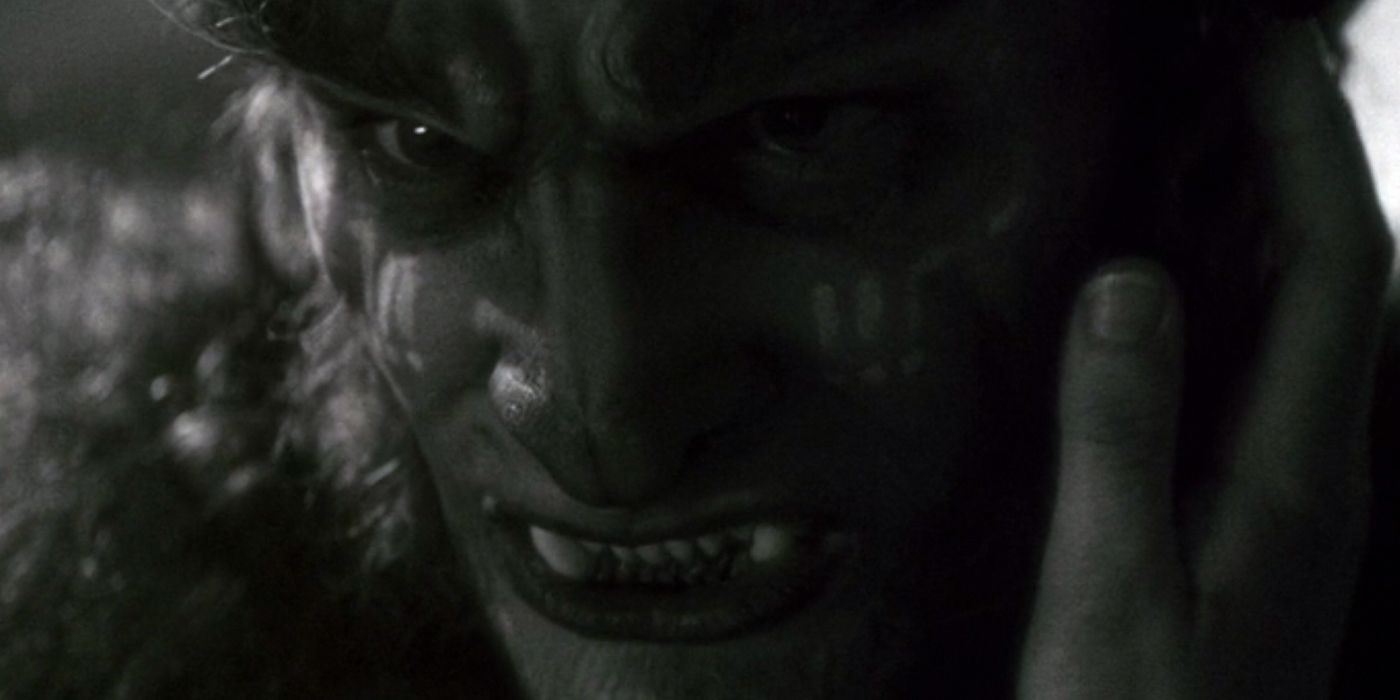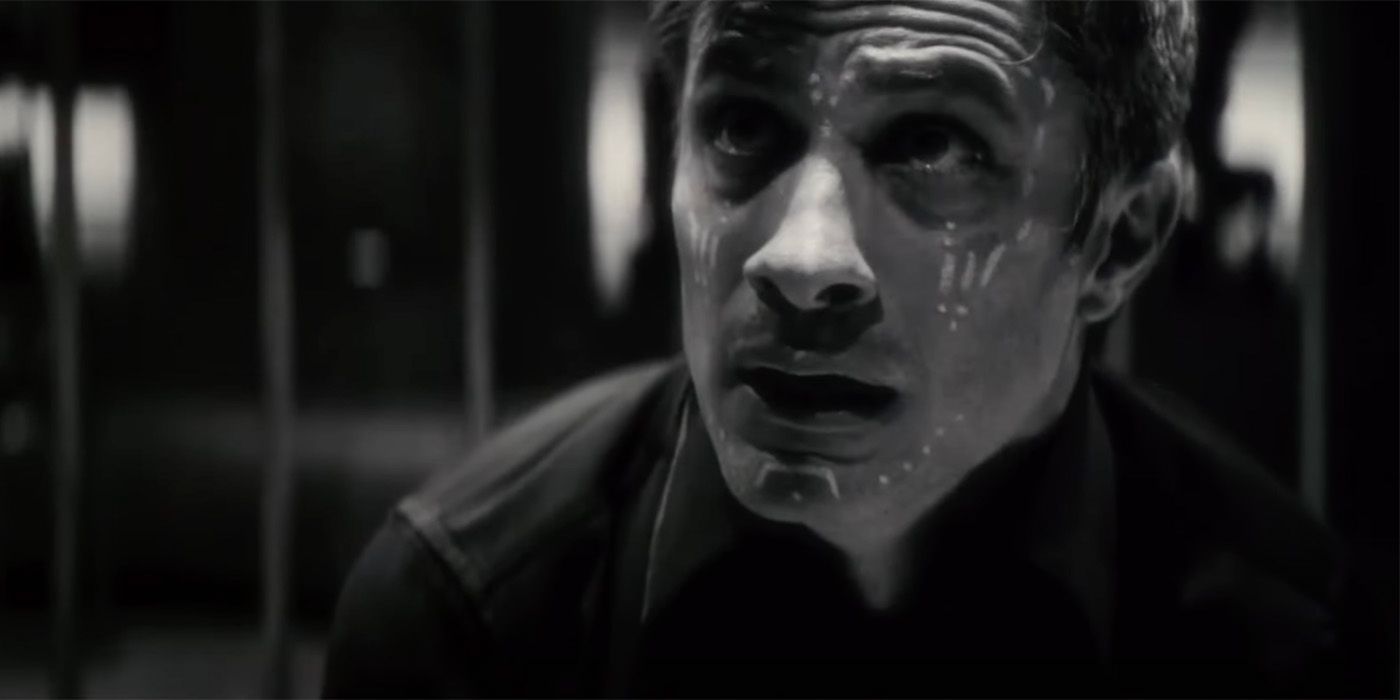Editor's Note: The following contains spoilers for Werewolf by Night.
The transformation scene is the pivotal moment in any werewolf movie. Everything else in the film has been building up to this point; it's what the audience came for. A great transformation scene can elevate a mediocre film, but a flub can turn a passable film into a laughable one. As a longtime fan of classic monster movies, I was hooked by Werewolf by Night's spooky, gothic atmosphere from the start, and I was excited to see how it would handle its main character's metamorphosis. Would Marvel tap into its massive CGI budget to create something truly terrifying, or would they use practical effects in keeping with the classic look of the feature? The answer turned out to be more complicated and more captivating than I had anticipated.
Director Michael Giacchino takes a page from early monster movie makers of the '20s, '30s, and '40s, who were forced to get creative because of the technological constraints of the time. In this short feature, Giacchino masterfully weaves together disparate elements — the acting, the dramatic score (also written by Giacchino), the sound effects, the cinematography — to craft a taut, suspenseful scene that doesn't actually show the transformation at all.
A Masterfully Shot Scene That Leaves You Wanting More
As Verussa aims the force of the bloodstone at Jack, we get just a glimpse of elongated fingers and claws and dilated pupils before the camera cuts to Elsa Bloodstone's horrified reaction — a jarring change from her previously stoic demeanor — in a long, slowly zooming shot. The transformation plays out in stark shadows that loom larger and larger on the wall behind her, an effect that could only be achieved so vividly with the black and white color palette, as the score builds in booming pulses over the sounds of clothing ripping and Jack writhing, moaning, and roaring.
Jaws taught us that not showing the monster is often the most effective way to build tension, and after the transformation is complete, Giacchino makes us wait a long time for a clear look at his werewolf. The guards and hunters zap the creature through the bars with electrified rods, filling the cage with smoke, until we pan up to the disturbing sight of the cage bars torn open — the werewolf has escaped! When Gael García Bernal finally reappears as the creature, fully made up using practical effects, he hulks toward the camera menacingly in a shot that could have been ripped directly from the heyday of Universal monsters. The scene that follows is a massacre filled with beautiful, indulgent long takes that make brilliant use of lighting and blood spatter on the camera lens to keep the worst of the violence obscured (an effect that Marvel likely wouldn't have allowed without the mitigating factor of black and white). I didn't want it to end.
Early filmmakers had to work with the special effects available to them, which led to some innovative ways of creating transformations. 1941's The Wolf Man, one of Universal's most beloved monster movies starring who else but Lon Chaney, Jr., focuses on protagonist Larry Talbot's feet as they become hairy and misshapen, leaving the rest to the audience's imagination. It, too, makes us wait for a good look at the rest of the creature, instead showing him in shadows and hunched silhouettes stalking through a foggy graveyard and murdering an unsuspecting groundskeeper.
Universal's follow-up to The Wolf Man, 1943's Frankenstein Meets the Wolf Man, again uses a static shot, but this time focused on the character's (Chaney, Jr. again) face. As he lies in bed, the light of the full moon strikes him through the window, and he stares at it forlornly as shaggy hair, large teeth, and a canine nose gradually appear in a long, lovingly constructed shot. An earlier film, 1935's Werewolf of London starring Henry Hull, takes a different approach. To create a more dynamic scene, the director makes ingenious use of hidden cuts during which the character walks behind stone columns and grows more wolf-like with each reappearance on the other side.
New Technology, New Transformations
As practical effects technology advanced, filmmakers moved away from these gentle transformations into more visceral ones. 1981 produced two such films, both with long, gruesome transformation scenes that revel in the body horror: Joe Dante's The Howling and John Landis's An American Werewolf in London. Landis's film makes it clear that the transformation is excruciating: the main character writhes and screams for help while his bones lengthen, his spine protrudes, and his body covers in hair. Michael Jackson's Thriller (1983) takes a similar route with grotesque closeups on the creature's face, hands, and ears.
When CGI came along, many directors were only too eager to jump on that train of possibilities, even long before the technology was advanced enough to create a convincing or quality scene. 1997's An American Werewolf in Paris was panned by critics for a variety of reasons, but the fully CGI monsters in particular are cartoonishly bad, and the transformations are mostly generic and uninspired.
On the other hand, 2010's The Wolfman — a retelling of the 1941 classic starring Benicio del Toro as Lawrence Talbot — features one of the best CGI transformation scenes in an otherwise mediocre movie. Believing Lawrence to be insane, his father has had him committed to an asylum where a smug doctor intends to make a lesson out of him. Strapped to a wheelchair and put on display on the floor of a crowded lecture hall as the full moon rises, Lawrence begins to transform, his feet tearing through his shoes, his skin darkening, and his jaws snapping while the oblivious doctor continues to lecture in front of him. The reaction shots of the increasingly terrified onlookers combine with Danny Elfman's energetic score playing over the sounds of tendons stretching and clothes ripping to create a wonderfully tense and scary scene.
A Love Letter to Classic Monster Movies
Werewolf by Night is an homage — or perhaps even a love letter — to the Universal monster movies of the first half of the 20th century, and although the transformation scene itself was technically created with CGI, its use of stark shadow and light, its cinematic score, and its lavish long takes evoke the look and melodrama of scenes from Hollywood icons like 1922's Nosferatu and 1931's Frankenstein much more so than modern films that use the same tech. In fact, its transformation scene would find itself right at home among the early greats, whose creators had to rely on their own ingenuity, rather than the magic of computer-generated effects, to achieve a convincingly scary werewolf mutation. And when Jack finally appears in all his wolfy glory, looking like he jumped straight out of the 1940s, I know Lon Chaney, Jr. himself would cheer.
Sometimes you can tell when you're watching the work of a filmmaker with a true love of cinema. Michael Giacchino is one of those filmmakers, and after more than two decades working in the industry as a celebrated composer, he's proven that he has an eye as well as an ear for creating a modern classic.




